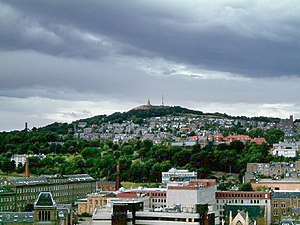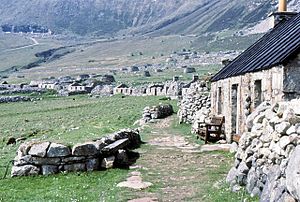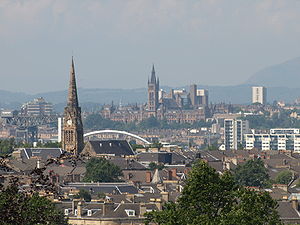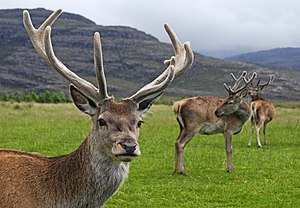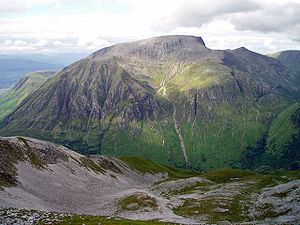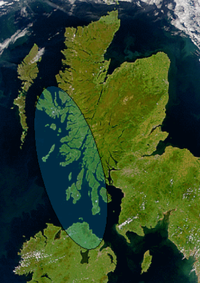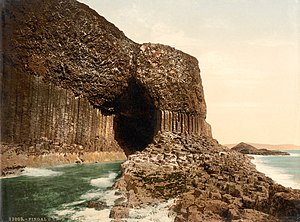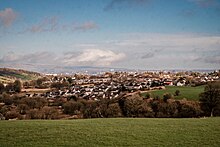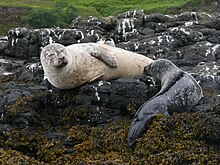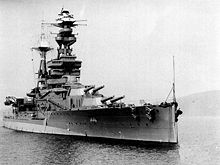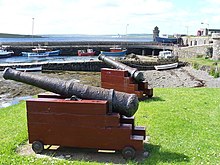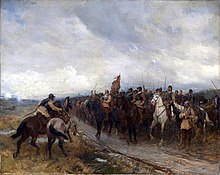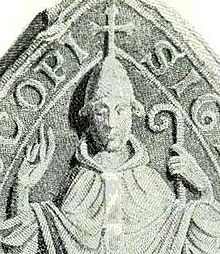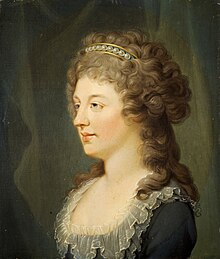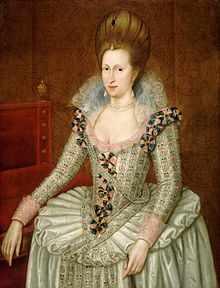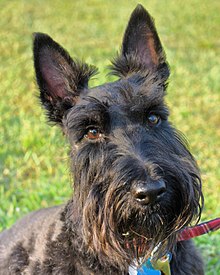User:Cactus.man/Sandbox/P-Sco/Selected articles
The Scotland Portal
| Main Page | Selected articles | Selected biographies | Selected quotes | Selected pictures | Featured Content | Categories & Topics |
Hand picked articles 1
Hand picked articles 2
Featured articles
Featured articles

The architecture of Scotland in the prehistoric era includes all human building within the modern borders of Scotland, before the arrival of the Romans in Britain in the first century BCE. Stone Age settlers began to build in wood in what is now Scotland from at least 8,000 years ago. The first permanent houses of stone were constructed around 6,000 years ago, as at Knap of Howar, Orkney and settlements like Skara Brae. There are also large numbers of chambered tombs and cairns from this era, particularly in the west and north. In the south and east there are earthen barrows, often linked to timber monuments of which only remnants remain. Related structures include bank barrows, cursus monuments, mortuary enclosures and timber halls. From the Bronze Age there are fewer new buildings, but there is evidence of crannogs, roundhouses built on artificial islands and of Clava cairns and the first hillforts. From the Iron Age there is evidence of substantial stone Atlantic roundhouses, which include broch towers, smaller duns. There is also evidence of about 1,000 hillforts in Scotland, most located below the Clyde-Forth line. (Full article...)
}
'"`UNIQ--templatestyles-00000043-QINU`"'
'"`UNIQ--references-00000044-QINU`"'
Source: (Full article...)
'"`UNIQ--templatestyles-00000043-QINU`"'
'"`UNIQ--references-00000044-QINU`"'
Source: (Full article...)
Scotland in the late Middle Ages, between the deaths of Alexander III in 1286 and James IV in 1513, established its independence from England under figures including William Wallace in the late 13th century and Robert Bruce in the 14th century. In the 15th century under the Stewart Dynasty, despite a turbulent political history, the Crown gained greater political control at the expense of independent lords and regained most of its lost territory to approximately the modern borders of the country. However, the Auld Alliance with France led to the heavy defeat of a Scottish army at the Battle of Flodden in 1513 and the death of the king James IV, which would be followed by a long minority and a period of political instability.
The economy of Scotland developed slowly in this period and a population of perhaps a little under a million by the middle of the 14th century began to decline after the arrival of the Black Death, falling to perhaps half a million by the beginning of the 16th century. Different social systems and cultures developed in the lowland and highland regions of the country as Gaelic remained the most common language north of the Tay and Middle Scots dominated in the south, where it became the language of the ruling elite, government and a new national literature. There were significant changes in religion which saw mendicant friars and new devotions expand, particularly in the developing burghs. (Full article...)
The economy of Scotland developed slowly in this period and a population of perhaps a little under a million by the middle of the 14th century began to decline after the arrival of the Black Death, falling to perhaps half a million by the beginning of the 16th century. Different social systems and cultures developed in the lowland and highland regions of the country as Gaelic remained the most common language north of the Tay and Middle Scots dominated in the south, where it became the language of the ruling elite, government and a new national literature. There were significant changes in religion which saw mendicant friars and new devotions expand, particularly in the developing burghs. (Full article...)
The 2007 Scottish Challenge Cup final was an association football match between Dunfermline Athletic and St Johnstone, held on 25 November 2007 at Dens Park in Dundee. It was the 17th final of the Scottish Challenge Cup since it was first organised in 1990 to celebrate the centenary of the Scottish Football League.
St Johnstone progressed through four knock-out rounds to reach the final whilst Dunfermline Athletic contested only three after receiving a random bye into the second round. The 2007 final was Dunfermline's second appearance in a cup final in six months, having lost the 2007 Scottish Cup final, although it was the club's first Challenge Cup final. The match was St Johnstone's second appearance in the final of the tournament having lost in 1996. The tournament was contested by clubs below the Scottish Premier League, with both clubs in the final coming from the First Division. (Full article...)
St Johnstone progressed through four knock-out rounds to reach the final whilst Dunfermline Athletic contested only three after receiving a random bye into the second round. The 2007 final was Dunfermline's second appearance in a cup final in six months, having lost the 2007 Scottish Cup final, although it was the club's first Challenge Cup final. The match was St Johnstone's second appearance in the final of the tournament having lost in 1996. The tournament was contested by clubs below the Scottish Premier League, with both clubs in the final coming from the First Division. (Full article...)
The National is a Scottish daily newspaper owned by Newsquest. It began publication on 24 November 2014, and was the first daily newspaper in Scotland to support Scottish independence. Launched as a response to calls from Newsquest's readership for a pro-independence paper in the wake of the 2014 Scottish independence referendum, it is a sister paper of The Herald, and is edited by Laura Webster. Initially published on weekdays, a Saturday edition was added in May 2015. The National is printed in tabloid format, and is also available via online subscription.
Details of its launch were announced on 21 November, with further information given at a Scottish National Party (SNP) rally the following day. It was launched on a five-day trial basis against the backdrop of a general decline in newspaper sales, with an initial print-run of 60,000 copies for its first edition, but this was increased the following day as a result of public demand, and Newsquest decided to print it on a permanent basis after healthy sales continued throughout the first week. The first front page carried a story about charities urging devolution of powers over welfare legislation to Scotland. (Full article...)
Details of its launch were announced on 21 November, with further information given at a Scottish National Party (SNP) rally the following day. It was launched on a five-day trial basis against the backdrop of a general decline in newspaper sales, with an initial print-run of 60,000 copies for its first edition, but this was increased the following day as a result of public demand, and Newsquest decided to print it on a permanent basis after healthy sales continued throughout the first week. The first front page carried a story about charities urging devolution of powers over welfare legislation to Scotland. (Full article...)
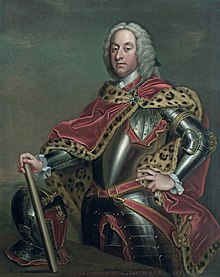
Lieutenant-General Sir James Campbell, KB (c. 1680 – 11 May 1745) was a Scottish military officer and Whig politician who sat in the British House of Commons from 1727 to 1741, representing the constituency of Ayrshire. A distinguished cavalry officer, Campbell began his military career at a young age and fought in several conflicts of the Second Hundred Years' War, along with serving as the governor of Edinburgh Castle from 1738 until his death in 1745.
Born in Lawers, Perthshire into an aristocratic Scottish family, Campbell joined the Scots Army when he was just thirteen years old. During the War of the Spanish Succession, Campbell served in Europe in the Royal North British Dragoons, fighting in the battles of Blenheim, Oudenarde and Malplaquet and rising to the rank of lieutenant-colonel. Following the war's end, Campbell became involved in politics, supporting the succession of the House of Hanover. (Full article...)
The Scottish Terrier (Scottish Gaelic: Abhag Albannach; also known as the Aberdeen Terrier), popularly called the Scottie, is a breed of dog. Initially one of the highland breeds of terrier that were grouped under the name of Skye Terrier, it is one of five breeds of terrier that originated in Scotland, the other four being the modern Skye, Cairn, Dandie Dinmont, and West Highland White terriers. They are an independent and rugged breed with a wiry outer coat and a soft dense undercoat. The first Earl of Dumbarton nicknamed the breed "the diehard". According to legend, the Earl of Dumbarton gave this nickname because of the Scottish Terriers' bravery, and Scotties were also the inspiration for the name of his regiment, The Royal Scots, Dumbarton’s Diehard. Scottish Terriers were originally bred to hunt vermin on farms.
They are a small breed of terrier with a distinctive shape and have had many roles in popular culture. They have been owned by a variety of celebrities, including the 32nd president of the United States, Franklin Delano Roosevelt, whose Scottie Fala is included with FDR in a statue in Washington, D.C., as well as by the 43rd president, George W. Bush. They are also well known for being a playing piece in the board game Monopoly. Described as territorial, feisty dogs, they can make a good watchdog and tend to be very loyal to their family. Healthwise, Scottish Terriers can be more prone to bleeding disorders, joint disorders, autoimmune diseases, allergies, and cancer than some other breeds of dog, and there is a condition named after the breed called Scotty cramp. They are also one of the more successful dog breeds at the Westminster Kennel Club Dog Show with a best in show in 2010. (Full article...)

The treasure of Loch Arkaig, sometimes known as the Jacobite gold, was a large amount of specie provided by Spain to finance the Jacobite rising in Scotland in 1745, and rumoured still to be hidden at Loch Arkaig in Lochaber. (Full article...)

Scotland under the Commonwealth is the history of the Kingdom of Scotland between the declaration that the kingdom was part of the Commonwealth of England in February 1652, and the Restoration of the monarchy with Scotland regaining its position as an independent kingdom, in June 1660.
After the execution of Charles I in 1649, the Scottish Parliament declared his son Charles II to be King of Scotland, England and Ireland. The English responded with an invasion led by Oliver Cromwell, resulting in defeats for the Scots at Dunbar and then at Worcester, opening the way for the English conquest of the country. Under the Tender of Union, Scotland was declared part of a Commonwealth with England and Ireland in 1652, but despite repeated attempts, an act was not passed in Westminster to ratify the union until 1657. Under the terms of the union, the Scots gained 30 members of parliament, but many posts were not filled, or fell to English agents of the government, and had very little say at Westminster. Initially the government was run by eight commissioners and adopted a policy of undermining the political power of the nobility in favour of the "meaner sort". From 1655 it was replaced by a new Council of Scotland, headed by Irish peer Lord Broghill, and began attempts to win over the traditional landholders. The regime built a series of major citadels and minor forts at immense cost. The Scottish legal system was suspended, but some courts and institutions were gradually restored. Generally the regime was successful in enforcing law and order and suppressing banditry. There was a major Royalist rising in the Highlands in 1653–1655 led by William Cunningham, Earl of Glencairn and John Middleton. After initial success, it suffered from internal divisions and petered out after defeat at the Battle of Dalnaspidal in 1654. (Full article...)
Mary Docherty (27 April 1908 – 2 February 2000) was a British activist and member of the Communist Party of Great Britain. Born to a working-class family in Cowdenbeath, Scotland, she was influenced by the communist beliefs of her father, a miner, as well as by the poverty she grew up in. She joined the Communist Party at the age of 18, and in 1929 traveled to the Soviet Union as a Scottish delegate to a gathering of young communists. She founded a local children's wing of the Communist Party, carried out a successful agitation to declare 1 May a school holiday, and worked for communist Member of Parliament Willie Gallacher. She retired from active politics at the age of 60, but continued to give talks and write her memoirs, published in 1991 as A Miner's Lass. (Full article...)
Forth Valley Royal Hospital is a hospital located in Larbert, Scotland. With 860 inpatient beds, 25 wards, and 16 operating theatres, it was Scotland's largest ever NHS construction project at the time but has been surpassed by the New Southern General hospital amongst others. Built at a cost of £300 million on the site of the old Royal Scottish National Hospital, it opened to its first patients in 2010. It is operated by NHS Forth Valley.
The hospital is the first in Scotland to have a Forestry Commission ranger on site, whose job is to encourage the use of the 70-acre (28 ha) grounds formerly belonging to the Larbert House estate. It has Scotland's first fully robotic pharmacy, in which robots dispense and label medicines. The hospital also employs robots to carry out tasks such as removing waste, delivering food to wards, and cleaning operating theatres. (Full article...)

The geography of Scotland in the Middle Ages covers all aspects of the land that is now Scotland, including physical and human, between the departure of the Romans in the early fifth century from what are now the southern borders of the country, to the adoption of the major aspects of the Renaissance in the early sixteenth century. Scotland was defined by its physical geography, with its long coastline of inlets, islands and inland lochs, high proportion of land over 60 metres above sea level and heavy rainfall. It is divided between the Highlands and Islands and Lowland regions, which were subdivided by geological features including fault lines, mountains, hills, bogs and marshes. This made communications by land problematic and raised difficulties for political unification, but also for invading armies.
Roman occupation of what is now southern Scotland seems to have had very little impact on settlement patterns, with Iron Age hill forts and promontory forts in the south and Brochs and wheel houses in the north, continuing to be occupied in the Early Medieval period. The study of place names and archaeological evidence indicates a pattern of early Medieval settlement by the Picts, most densely around the north-east coastal plain; early Gaelic settlement was predominately in the western mainland and neighbouring islands. Anglian settlement in the south-east reached into West Lothian, and to a lesser extent into south-western Scotland. Later Norse settlement was probably most extensive in Orkney and Shetland, with lighter settlement in the Western Islands. (Full article...)

Pte. Andrew Ross (15 May 1879 – 6 April 1916) was a Scottish rugby union player from Edinburgh. He worked in the Merchant Navy as a marine engineer. He played for Royal High School FP and was capped several times for Scotland between 1905 and 1909.
In 1910, Ross moved to Vancouver and enlisted with the Canadian Expeditionary Force after the First World War broke out, and was sent to Belgium with the 29th Canadians (Tobin's Tigers). Wounded during the Actions of St Eloi Craters, Ross risked his life to aid other wounded men under heavy fire when he was hit by a shell and killed. He is buried in Ridge Wood Military Cemetery, Belgium. (Full article...)

Scottish religion in the seventeenth century includes all forms of religious organisation and belief in the Kingdom of Scotland in the seventeenth century. The 16th century Reformation created a Church of Scotland, popularly known as the kirk, predominantly Calvinist in doctrine and Presbyterian in structure, to which James VI added a layer of bishops in 1584.
While these terms now imply differences in doctrine, in the 17th century Episcopalian meant churches governed by bishops, usually appointed by the monarch; Presbyterian implied rule by Elders, nominated by congregations. By the 1630s, around 90-95% of Scots were members of the church, and despite disagreements on governance, there was general alignment on Calvinist doctrine. In the 17th century, religious disputes were often as much about political principles, due to the assumption 'true religion and true government' were one and the same. (Full article...)
William Shankly OBE (2 September 1913 – 29 September 1981) was a Scottish football player and manager who is best known for his time as manager of Liverpool. Shankly brought success to Liverpool, gaining promotion to the First Division and winning three League Championships and the UEFA Cup. He laid foundations on which his successors Bob Paisley and Joe Fagan were able to build by winning seven league titles and four European Cups in the ten seasons after Shankly retired in 1974. A charismatic, iconic figure at the club, his oratory stirred the emotions of the fanbase. In 2019, 60 years after Shankly arrived at Liverpool, Tony Evans of The Independent wrote, "Shankly created the idea of Liverpool, transforming the football club by emphasising the importance of the Kop and making supporters feel like participants".
Shankly came from a small Scottish mining community and was one of five brothers who played football professionally. He played as a ball-winning right-half and was capped twelve times for Scotland, including seven wartime internationals. He spent one season at Carlisle United before spending the rest of his career at Preston North End, with whom he won the FA Cup in 1938. His playing career was interrupted by his service in the Royal Air Force during the Second World War. He became a manager after he retired from playing in 1949, returning to Carlisle United. He later managed Grimsby Town, Workington and Huddersfield Town before moving to become Liverpool manager in December 1959. (Full article...)
Shankly came from a small Scottish mining community and was one of five brothers who played football professionally. He played as a ball-winning right-half and was capped twelve times for Scotland, including seven wartime internationals. He spent one season at Carlisle United before spending the rest of his career at Preston North End, with whom he won the FA Cup in 1938. His playing career was interrupted by his service in the Royal Air Force during the Second World War. He became a manager after he retired from playing in 1949, returning to Carlisle United. He later managed Grimsby Town, Workington and Huddersfield Town before moving to become Liverpool manager in December 1959. (Full article...)
Papa Stour is one of the Shetland Islands in Scotland, with a population of under fifteen people, some of whom immigrated after an appeal for residents in the 1970s. Located to the west of mainland Shetland and with an area of 828 hectares (3.2 square miles), Papa Stour is the eighth largest island in Shetland. Erosion of the soft volcanic rocks by the sea has created an extraordinary variety of caves, stacks, arches, blowholes, and cliffs. The island and its surrounding seas harbour diverse populations of wildlife. The west side of the island is a Site of Special Scientific Interest and the seas around the island are a Special Area of Conservation.
The island has several Neolithic burial chamber sites, as well as the remains of Duke Hakon's 13th-century house dating from the Norse occupation of the island. The population reached 380 or more in the nineteenth century, when a fishing station was opened at Crabbaberry in West Voe. Subsequently, there was a steady decline in population. (Full article...)
The island has several Neolithic burial chamber sites, as well as the remains of Duke Hakon's 13th-century house dating from the Norse occupation of the island. The population reached 380 or more in the nineteenth century, when a fishing station was opened at Crabbaberry in West Voe. Subsequently, there was a steady decline in population. (Full article...)
Kim Alison Little MBE (born 29 June 1990) is a Scottish footballer who plays as a midfielder for and captains Arsenal of the English FA WSL. Before her retirement from international duty in 2021, Little was vice-captain of the Scotland national team. She begun her senior career at Hibernian, winning the Scottish Premier League, Scottish Women's Cup and Scottish Premier League Cup with the club in the 2006–2007 season. With Arsenal, she is a two time Premier League National Division winner, five time League Cup winner, and three time WSL and FA Cup winner. During her time at Seattle Reign, Little won the Golden Boot and Most Valuable Player awards.
Little began representing Scotland at the senior international level in 2007 at age 16, scoring Scotland's first hat trick in 2012, and helping them qualify for Euro 2017 and the 2019 World Cup. She was one of two Scots selected for the Great Britain squad that reached the quarterfinals of the 2012 London Olympics, and again at the delayed 2020 Tokyo Olympics. (Full article...)
The Outer Hebrides (/ˈhɛbrɪdiːz/ HEB-rid-eez) or Western Isles (Scottish Gaelic: na h-Eileanan Siar [nə ˈhelanən ˈʃiəɾ] ⓘ, na h-Eileanan an Iar [nə ˈhelanən əɲ ˈiəɾ] ⓘ or na h-Innse Gall, 'Islands of the Strangers'; Scots: Waster Isles), sometimes known as the Long Isle or Long Island (Scottish Gaelic: an t-Eilean Fada), is an island chain off the west coast of mainland Scotland. The islands are geographically coextensive with Comhairle nan Eilean Siar, one of the 32 unitary council areas of Scotland. They form part of the archipelago of the Hebrides, separated from the Scottish mainland and from the Inner Hebrides by the waters of the Minch, the Little Minch, and the Sea of the Hebrides.
Most of the islands have a bedrock formed from ancient metamorphic rocks, and the climate is mild and oceanic. The 15 inhabited islands have a total population of 26,120 and there are more than 50 substantial uninhabited islands. The distance from Barra Head to the Butt of Lewis is roughly 210 kilometres (130 mi). (Full article...)

Forglen House is a mansion house that forms the centrepiece of the Forglen estate in the parish of Forglen, north-west of Turriff, Aberdeenshire, in the north-east of Scotland. The lands were given to the abbots of the Abbey of Arbroath by King William the Lion before 1211 and the Monymusk Reliquary was held there. The original castle, built around 1346, was replaced by a vernacular harled house that was later extended. Significant development of the estate began when it was acquired by the family of Lord Banff and they started the work of landscaping and planting trees. It became their main family seat during the 18th century. After the death of William Ogilvy, the eighth and final Lord Banff, the estate passed by marriage to the Abercromby baronets who continued to enhance the property and maintained it as their main residence. Sir Robert Abercromby, 5th Baronet commissioned the Aberdeen City Architect, John Smith to design the present house in 1839.
Forglen House was sold by the Abercromby family in 1974 but remains in private ownership. It is not open to the public, although access to the grounds is available and some cottages can be hired as holiday lets, including one of the lodge houses. (Full article...)

![Image 1 The Dundee Law Dundee (/dʌnˈdiː/ ⓘ; Scots: Dundee; Scottish Gaelic: Dùn Dè or Dùn Dèagh, pronounced [t̪un ˈtʲeː]) is the fourth-largest city in Scotland. The mid-year population estimate for 2016 was 148,210, giving Dundee a population density of 2,478/km2 or 6,420/sq mi, the second-highest in Scotland. It lies within the eastern central Lowlands on the north bank of the Firth of Tay, which feeds into the North Sea. Under the name of Dundee City, it forms one of the 32 council areas used for local government in Scotland. Within the boundaries of the historic county of Angus, the city developed into a burgh in the late 12th century and established itself as an important east coast trading port. Rapid expansion was brought on by the Industrial Revolution, particularly in the 19th century when Dundee was the centre of the global jute industry. This, along with its other major industries, gave Dundee its epithet as the city of "jute, jam and journalism". Today, Dundee is promoted as "One City, Many Discoveries" in honour of Dundee's history of scientific activities and of the RRS Discovery, Robert Falcon Scott's Antarctic exploration vessel, which was built in Dundee and is now berthed at Discovery Point. Biomedical and technological industries have arrived since the 1980s, and the city now accounts for 10% of the United Kingdom's digital entertainment industry, including mobile app development and gaming. Dundee has two universities – the University of Dundee and Abertay University. In 2014, Dundee was recognised by the United Nations as the UK's first UNESCO City of Design for its diverse contributions to fields including medical research, comics and video games. (Full article...) Read more ... (Full article...)](http://upload.wikimedia.org/wikipedia/en/d/d2/Blank.png)
